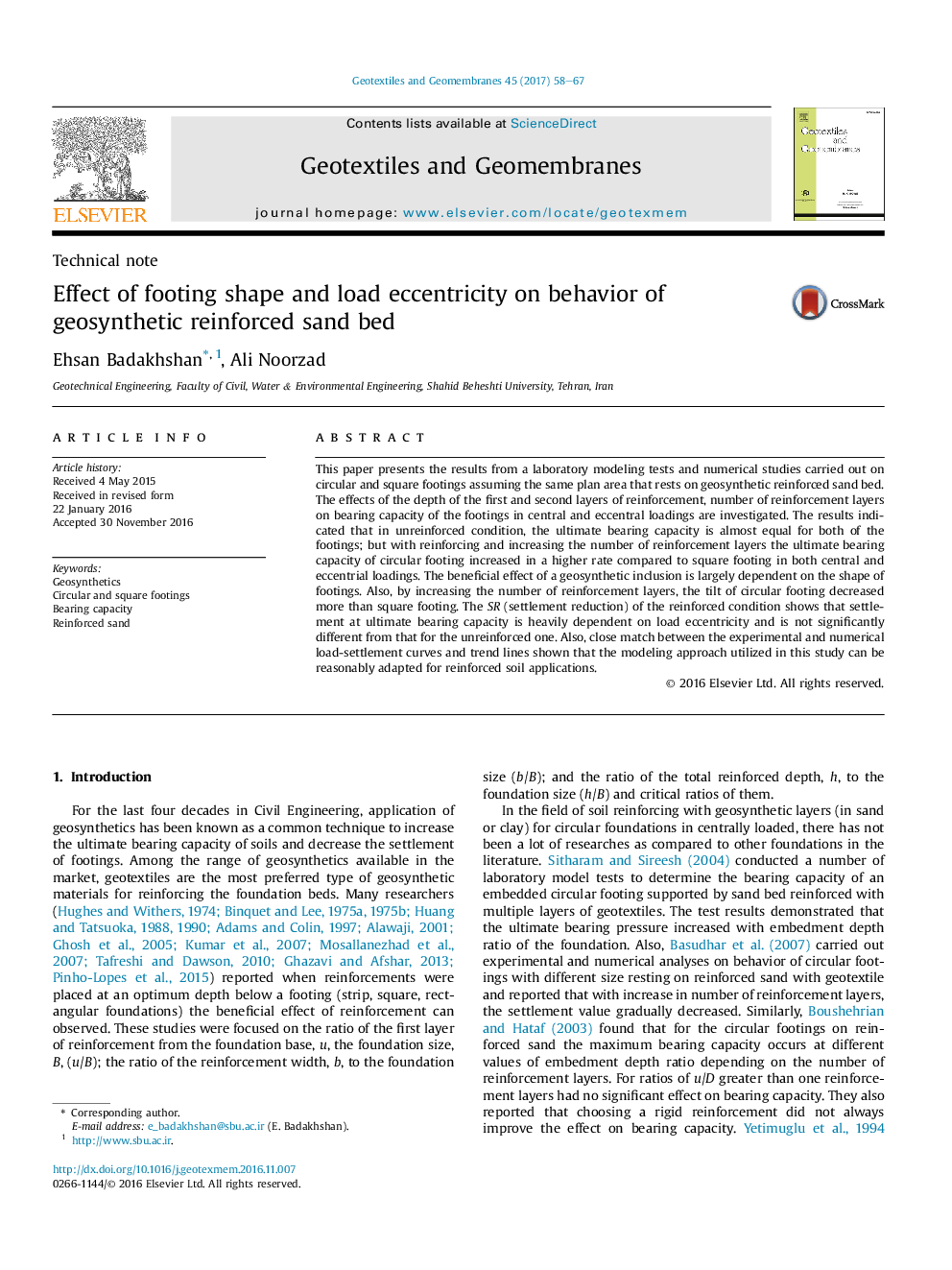| Article ID | Journal | Published Year | Pages | File Type |
|---|---|---|---|---|
| 4921673 | Geotextiles and Geomembranes | 2017 | 10 Pages |
Abstract
This paper presents the results from a laboratory modeling tests and numerical studies carried out on circular and square footings assuming the same plan area that rests on geosynthetic reinforced sand bed. The effects of the depth of the first and second layers of reinforcement, number of reinforcement layers on bearing capacity of the footings in central and eccentral loadings are investigated. The results indicated that in unreinforced condition, the ultimate bearing capacity is almost equal for both of the footings; but with reinforcing and increasing the number of reinforcement layers the ultimate bearing capacity of circular footing increased in a higher rate compared to square footing in both central and eccentrial loadings. The beneficial effect of a geosynthetic inclusion is largely dependent on the shape of footings. Also, by increasing the number of reinforcement layers, the tilt of circular footing decreased more than square footing. The SR (settlement reduction) of the reinforced condition shows that settlement at ultimate bearing capacity is heavily dependent on load eccentricity and is not significantly different from that for the unreinforced one. Also, close match between the experimental and numerical load-settlement curves and trend lines shown that the modeling approach utilized in this study can be reasonably adapted for reinforced soil applications.
Related Topics
Physical Sciences and Engineering
Earth and Planetary Sciences
Geotechnical Engineering and Engineering Geology
Authors
Ehsan Badakhshan, Ali Noorzad,
